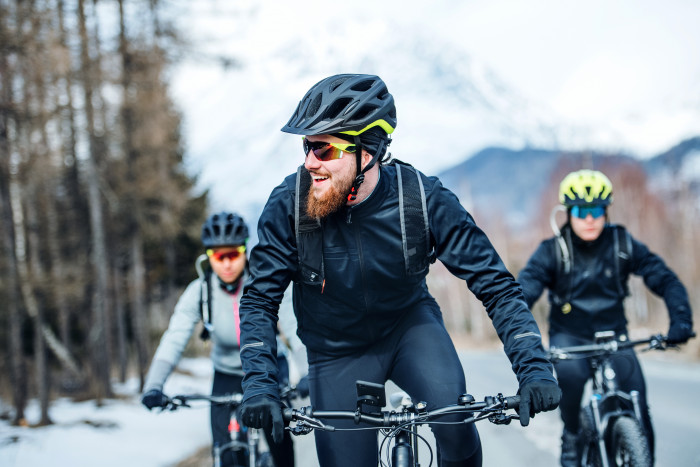
Winter Cycling Tips: Techniques, Style, and Safety
Winter cycling in the UK means unpredictable weather, slippery roads, and shorter daylight hours. But that shouldn’t stop you from grabbing your bike and getting out and about.
Here’s our practical guide to winter cycling techniques, style adjustments, and safety tips to help you tackle the winter rides, confidently.
1. Adjusting Your Riding Technique
Wintery conditions mean a shift in your cycling technique to help with keeping control on slippery or icy surfaces.
Slower Speeds and Smooth Pedaling:
Slowing down gives you more time to react to any sudden changes in road conditions, like ice or wet patches. And keeping a steady, smooth pedal stroke instead of quick bursts of power will help maintain traction.
Braking Wisely on Slippery Roads:
Brake earlier and more gently than you would in dry weather, applying pressure gradually to avoid locking up your wheels and skidding. Use the rear brake first, as it reduces the risk of a front-wheel skid. And if you do hit an icy patch, avoid braking altogether and ride it out with steady, balanced pedaling.
Positioning on the Road:
In wet or icy conditions, positioning yourself slightly further out from the curb can help you avoid anything lurking in and around the edges such as ice, wet leaves, and pooling water. Riding further from the edge also makes you more visible to cars and gives you room to manoeuver around any hazards.
2. Adapting Riding Style for Comfort and Efficiency
Winter means chilly weather and often unexpected and sometimes tricky riding conditions:
Layering and Movement:
Staying warm is important, but equally essential is maintaining flexibility. Layering clothing helps manage heat, as you can add or remove layers to stay comfortable. Look for lightweight, moisture-wicking base layers to keep sweat away from your skin, topped with insulating layers to trap warmth. Avoid bulky jackets that restrict movement.
Upright Riding Position:
In colder weather, an upright posture provides better control over the bike, especially if conditions get icy or windy. Sitting slightly more upright allows you to handle the bike with more stability and makes it easier to spot any hazards ahead, giving you extra time to react.
3. Safety and Awareness
Safety is, of course, the No1 thing to think about in winter.
Increasing Your Visibility:
With reduced daylight and the likelihood of fog, rain, or snow, visibility can be a bit of a challenge. Use your front and rear lights at all times, even during the day, to make yourself more noticeable. Reflective clothing and bike accessories will make sure you stand out, especially in low-light conditions.
Choosing Safe Routes:
Prioritise routes that you know well and that have good lighting, even if they’re a bit longer. Avoid areas known for poor drainage or heavy shade, as they’re more prone to icy patches. Some weather apps offer localised road condition updates, so check before setting out.
Being Aware of Winter-Specific Hazards:
Think black ice, wet leaves, and road salt, all of which can impact bike handling. Black ice can be nearly invisible, so ride cautiously if the temperature is near freezing. Wet leaves can be just as slippery, so slow down when approaching leafy patches. Also, road salt can corrode parts of your bike, so make sure to clean it regularly.
4. Maintaining Energy and Staying Alert
Staying alert and keeping your energy up is key in winter as low temperatures can sap your stamina.
Stay Hydrated and Fuelled:
It’s easy to forget about hydration in winter, as you might not feel as thirsty as in summer but always take along a water bottle. Bring along snacks for longer rides to keep your energy levels up, as your body uses more energy to stay warm in the colder weather.
Pacing Yourself for Longer Rides:
Cold weather can mean you get tired more quickly so avoid high-intensity sprints, which can lead to burnout, and focus on a steady, manageable speed. Remember to take short breaks to warm up, stretch, and keep blood flowing to your hands and feet.
Winter cycling is about adjusting your approach rather than avoiding the ride altogether. But with a few adjustments, you can ride safely, embrace the season and enjoy the quieter trails!
